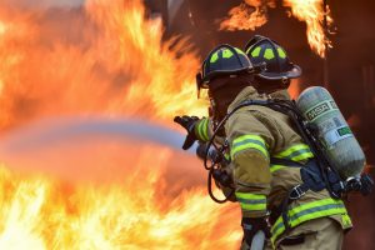Fire damage not only damages property but also affects living beings. It can cause structural damages and emotional impact on human’s life. Therefore, all must be very careful with the safety measure of fire.
In the scenario of Nepal in the present state, cities are being commercialized. We can see huge. Tall buildings like Labim Mall, City Center, Civil Mall, Chaaya Center, etc. are the examples for the commercialized buildings. Nowadays, many hotels and residential buildings are being taller. For the safety of people and property safety management is a must.
According to NBC 107:1994, fire exits must be free of any obstructions and no resistance. It must be preferably visible with proper signs. Must be a short path to evacuate to the safer place. This is not enough for the fire safety management of a building. These safety codes conducted by NBC is only beneficial and safer for human beings. As a whole building safety one must be concerned with the whole building. Like the building properties, assets, doors, windows, systems, etc. Keeping in mind there need to be fire exits for human as well as safety methods for the properties.
For the safety of Building property, the minimum requirement is to have a fire extinguisher which can be easily available in time of need. Fire Extinguishers helps to prevent fire to explode and also prevents from huge damage. Another measure of fire safety is to have a fire security system installed in a building. The fire security system is automated system which detects tiny sparkle of fire and takes action on it. First, it rings the fire alarms so that people would be aware of the upcoming danger. It can detect where the fire is starting inside the building. Some spiffing fie security systems have an automatic system to shower water inside the building to prevent everything and everyone from fire.
Loss of life and the demolition of property by man-made fire disasters or natural disasters such as earthquakes, floods, landslides, etc. can be diminished by prudent decisions that are based on the state of the science and as reflected through evolving building codes. Tall buildings are affiliated with their own special pitfalls. The amount of fire risk in smaller buildings depends on their fire load and includes their use and materials of construction. The number of people using that building facility must be considered for the risk
Issues such as smoke protection and fire protection, non-toxic fire extinguish systems, structural fire protection and impact on the structural design must be addressed. The “Public Safety for All including People with Disabilities and the Elderly“, is a priority that must address the inadequacy of fire-fighting resources in Nepal. The tragic aftermath from the 2015 Nepal Earthquake stands as testimony to the lack of attention paid to fire-fighting resources. The Patan Fire House of Pulchowk is completely destroyed. The shape of the Juddha Barun Yantra building in Kathmandu is pathetic. The state of the fire stations, infrastructure development and inadequate oversights and community building design practices manifest these inadequacies. Outdated systems cannot meet the needs of today’s Kathmandu Valley. Without neglecting these facts of the present state of Nepal, we must be very careful and concerned about fire security management in building with its own safety measures.

